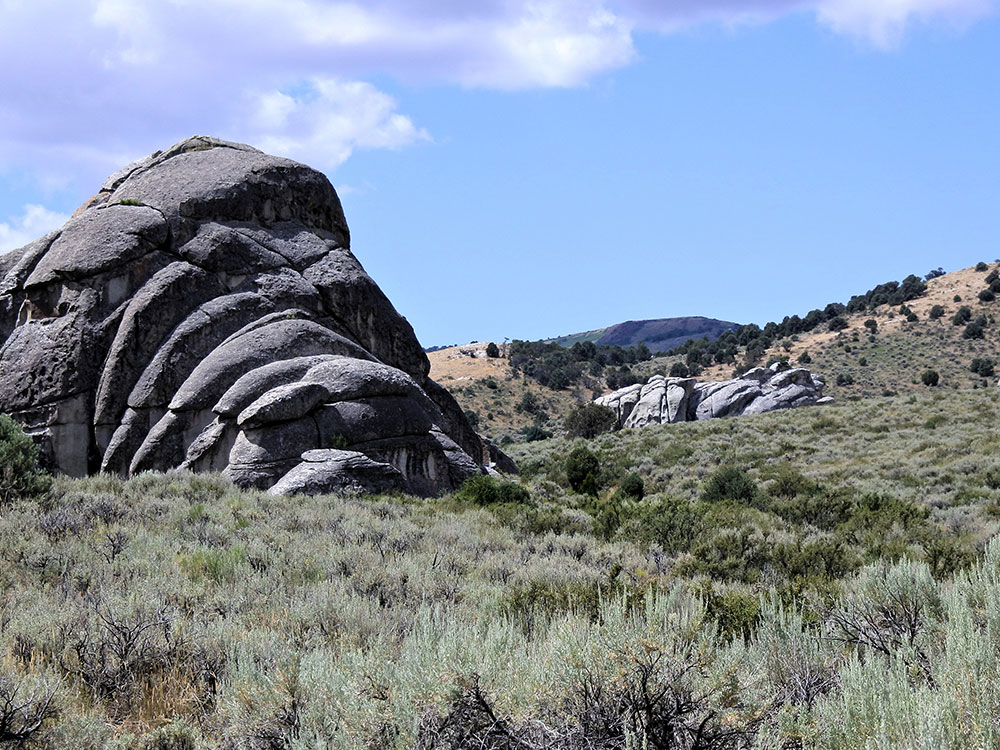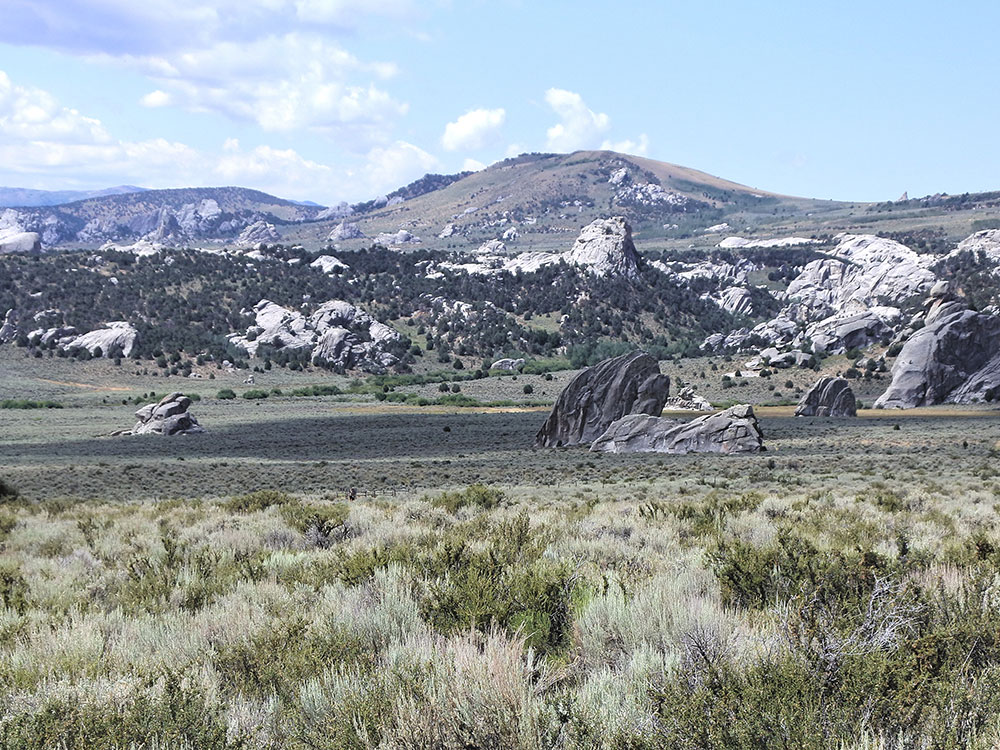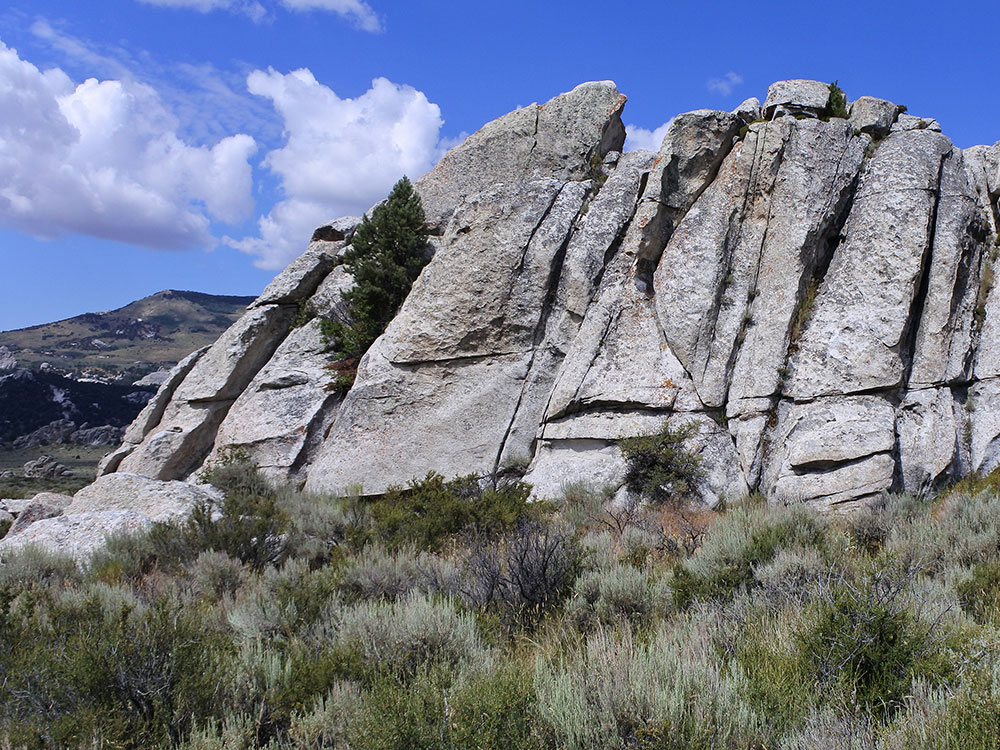National reserve and state park known for its enormous granite rock formations and excellent rock climbing
General Information
Visitor Center
Peak Season
Open daily 8am to 4:30pm
Off-peak
Tuesdays to Saturdays 8am to 4:30pm
From Salt Lake City, UT (166 miles): Get on I-15 N. Follow I-15 N and I-84 W to UT-30 W in Box Elder County. Take exit 5 from I-84 W. Continue on UT-30 W. Take UT-42 W and E Naf Rd S to 3400 S/S Twin Sisters Rd in Cassia County.
The City of Rocks National Reserve, also known as the Silent City of Rocks, is a national reserve and state park in south-central Idaho, approximately 2 miles north of the border with Utah. It is widely known for its enormous granite rock formations and excellent rock climbing.

The rock spires in the City of Rocks and adjacent Castle Rocks State Park are largely composed of granitic rock of the Oligocene Almo pluton and Archean Green Creek Complex. City of Rocks is also a popular rock climbing area, with over 1,000 traditional and bolt-protected routes. In the 1980s, it was home to some of the most difficult routes in the country, mostly developed by Idaho climber Tony Yaniro. Climbers in the region refer to the area as simply "The City".
During the 1840s and 1850s, wagon trains on the California Trail left the Raft River valley and traveled through the area and over Granite Pass into Nevada. Names or initials of emigrants written in axle grease are still visible on Register Rock, and ruts from wagon wheels can be seen in some of the rocks.
The area's historical and geological values, scenery, and opportunities for recreation led to its designation as City of Rocks National Reserve in 1988.
City of Rocks, an extraordinary encirclement of granite rising out of the gently rolling sagebrush country in south-central Idaho, has attracted and intrigued people since they first entered this region. The Shoshone camped here as did the emigrants traveling along the California Trail. One of the reserve's most notable qualities is its large degree of biological diversity concentrated in a relatively small area. The great variety of textures, colors, and shapes in the natural landscape contributes considerably to the reserve's scenic quality.
The landscape of City of Rocks has been sculpted from granite that was intruded into the crust during two widely spaced times. The granite that composes most of the spires is part of the 28-million-year-old Almo pluton. However, some of the spires are made of granite that is part of the 2.5 billion-year-old Green Creek Complex that contains some of the oldest rocks in the western United States. The granite has eroded into a fascinating assortment of shapes.
City of Rocks was designated a National Reserve, a unit of the National Park Service, in recognition of the nationally significant geological and scenic values of its rock formations and the historical significance of the California Trail. Rock formations in the reserve developed through an erosion process called exfoliation, during which thin rock plates and scales sloughed off along joints in the rocks. The joints, or fractures, resulted from the contraction of the granite as it cooled, from an upward expansion of the granite as overlying materials were eroded away, and from regional tectonic stresses. The granite has eroded into a fascinating assortment of shapes as high as 600 feet (180 m). The upper surfaces of many of the rocks are covered with flat-floored weathering pits known as panholes. The most notable panhole is located on top of Bath Rock and is continuously filled with water from rain or snowmelt.
Mountains
The reserve is in the southern part of the Albion Mountains, bordered on the east by the Raft River valley and to the north by the Snake River valley. Elevations rise from 5,650 feet (1,720 m) where Circle Creek meets the reserve boundary to 8,867 feet (2,703 m) at the top of Graham Peak to the north.
This article uses material from the Wikipedia article "City of Rocks National Reserve", which is released under the Creative Commons Attribution-Share-Alike License 3.0

